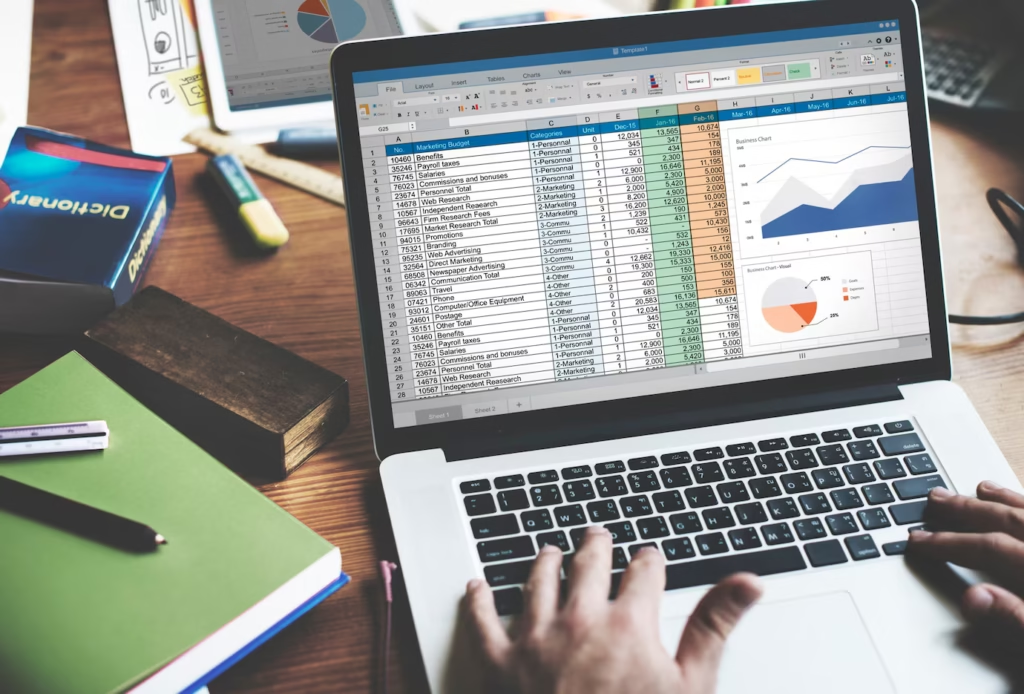Technology is an agent in sharpening the roles that businesses play within their scope, and one of the greatest transformations that will follow is a shift from the manual system of finance to a Computerized Accounting System. This will prove to be a great asset in improving efficiency and accuracy, as well as real-time reporting of financial data. These changes, however, include some challenges, such as training the workforce, securing data, and transitioning to new systems. Quite a few other factors have to be understood in ensuring their smooth and successful transition.
What is a Computerized Accounting System?
A computerized accounting system is an electronic software developed for the performance of financial accounts, bookkeeping, and reporting. It seeks to automate different accounting activities such as issuing invoices, processing payroll, making tax computations, and generating financial statements. Hence, it reduces manual entries and minimises the risk of errors in the accounting.
The best-known accounting software includes QuickBooks, Xero, Sage, and SAP. These systems range from simple applications for small businesses to extremely complex platforms designed for large enterprises.
Benefits of a Computerized Accounting System
A computerized accounting system has clear advantages linked to the aforementioned reasons. Best of all, it increases precision and reduces human error by automating the process of manual calculations. It also significantly improves the time taken to prepare and reconcile financial statements. Businesses now enjoy real-time reporting capabilities with up-to-date availability of financial records for better decision-making.
Another important benefit is that it can be organized in a better way. Keeping finances in electronic mode makes it easy to retrieve and analyze information instead of maintaining physical ledgers and papers. As the company grows, a computerized accounting system can grow with it and not require a substantial change to handle a large volume of transactions. Many systems of accounting software are integrated with banking platforms, payroll management tools, or tax compliance systems to allow seamless operation for business finances.
Challenges in Transitioning to a Computerized Accounting System
The merits of computerized accounting systems weigh heavily on the balance for businesses during the transition, yet scrutiny over certain encumbrances that must then be additional criteria for consideration arises. Chief among these impediments is resistance to change. Employees, in particular those steeped in manual accounting systems for decades, will have major reservations about learning a new system. They may fear that the transition will create complications for them rather than simplify their work.
Another obstacle is set-up costs. The purchase of accounting software, hardware upgrades, and training costs will demand that money be parted with. Many accounting systems charge a subscription, adding another expense to the accounting or finance overheads of companies. Long-term, however, it is often the case that the enhanced efficiencies and accuracy gained from the system outweigh these initial costs.
A third obstacle comes in the form of a steep learning curve for new software. Employees require extensive training to become comfortable with the system, and errors can occur during the initial implementation. To this end, the business must find some time to train and equip its employees to use the system efficiently.
The next important consideration is security and data privacy. Financial data held in digital format is susceptible to cyber threats, data breaches, and unauthorized access. Therefore, to overcome these risks, companies should equip themselves with robust cybersecurity measures like encryption, access controls, and regular data backups.
Another possible challenge that could come up would be system downtime and technical failures. Software bugs, compatibility issues, and hardware failures could hinder work without efficient support being provided. It is important to have an IT team or customer service to help support any technical issues.
Steps for a Smooth Transaction to a Computerized Accounting System
Step 1: Assess Business Needs and Choose the Right Software
It is very important to assess the financial management needs of an organization before an accounting system implementation in the company. Some considerations in choosing appropriate software would be the volume of transactions, industry-specific needs, and expenses. Researching different systems and selecting a system that matches both the size and complexity of the business is fundamental.
Step 2: Develop a Transition Plan
A comprehensive transition plan guarantees a seamless switch from manual to computerized bookkeeping. The plan should also delineate a clear timeline for setting implementation, further allocate a budget for software and training, and develop a way to migrate the current financial data. Involving major personnel responsible for overseeing tthe ransition can also help keep the organization accountable throughout the process.
Step 3: Train Employees
Training is essential for the successful adoption of the system. The staff must get hands-on experience to learn the features and functionalities of the system. Possible training interventions may include workshops, online tutorials, or external trainers. The more familiar employees are with the system, the better they will know how to work with it.
Step 4: Implement the System Gradually
Instead of converting to the new system in one single step, businesses should implement it gradually. The gradual approach will allow employees to adjust to the new system in progressive stages, reducing the disruption caused by the new system, along with the errors. For example, the system could begin its life doing basic bookkeeping functions, to be followed by invoicing, accounts payable administration, and financial reporting.
Step 5: Migrate Financial Data and Test the System
Migrate old financial records to the new system slowly in order to prevent the loss or inaccuracy of data. Most importantly, business houses should practice running trial runs of the system’s reports to verify that the migrated financial data is all in place. Testing would also help in diagnosing any technical problems that need to be fixed before complete implementation.
Step 6: Strengthen Security Measures
Provide rigorous security measures such as establishing good passwords, multi-factor authentication, limitations based on user roles, and regular data. Companies need to have pores for their financial information. Other interventions ensure that cyber policies fit in the slot open-to-open for availing a menace against threats.
Step 7: Monitor and Improve the System
The maintenance of systems will involve monitoring once it is completely functional and in full operation. Businesses should continuously monitor systems’ performance, consider employee feedback, and update their systems according to technological innovations and regulatory changes.
Key Takeaway
A switch to a computerized accounting system is one major step toward improved efficiency, accurate record-keeping, and enhanced financial management. This stage is impeded by resistance from employees, the need for training, and cybersecurity threats.
A successful implementation can be ensured with thorough planning. After the adoption of a computerized system, the organization must select the appropriate software, train its employees, implement necessary security protocols, and monitor the system continuously. A computerized accounting system certainly makes the financial processes easier and makes a company poised for greater market relevance in a more digital-driven environment.



